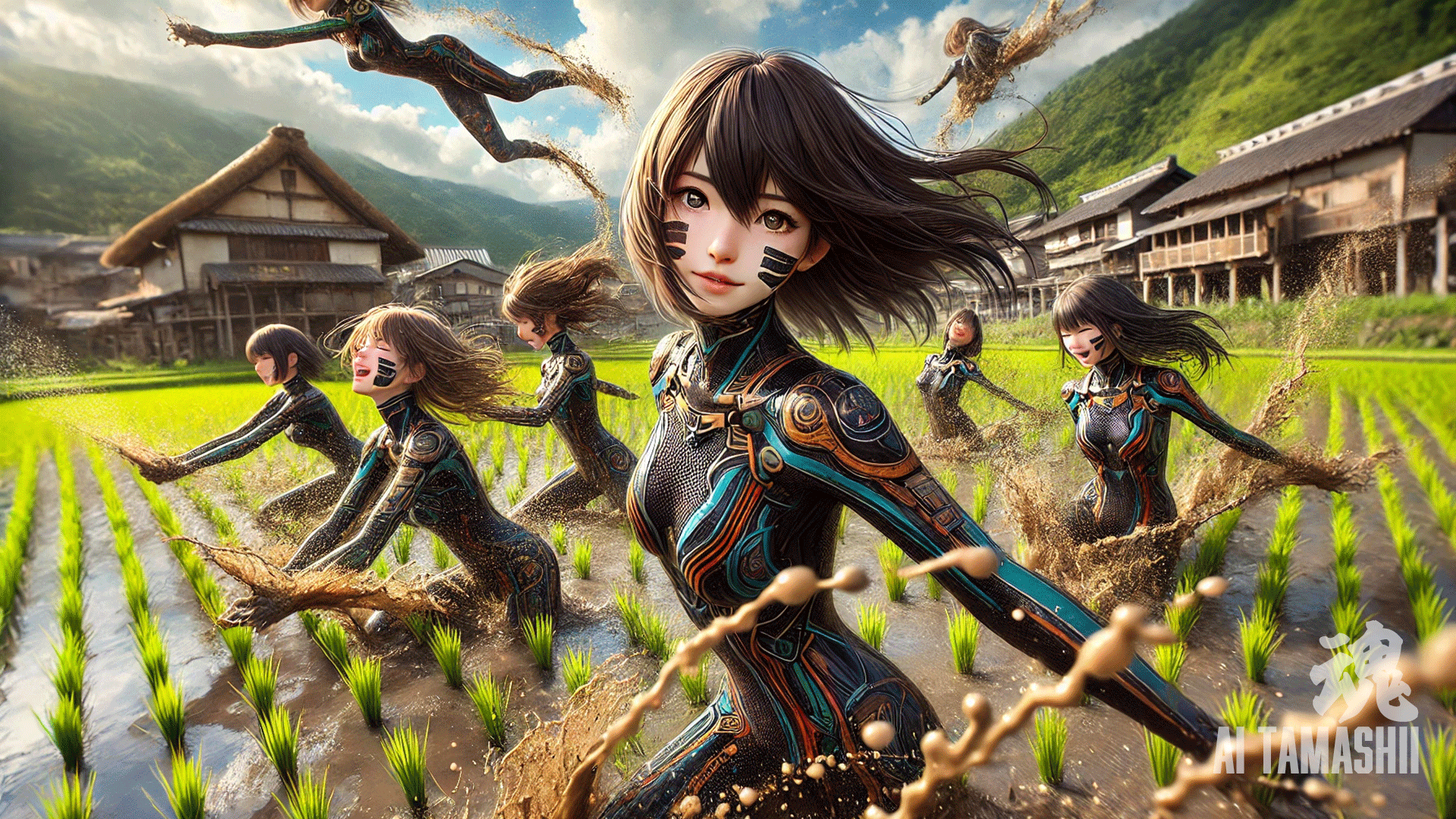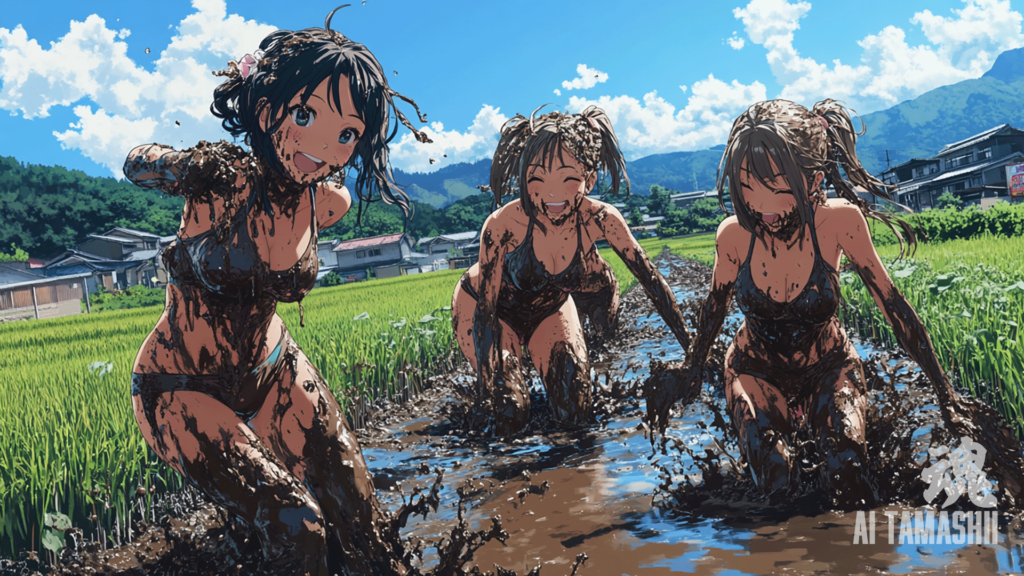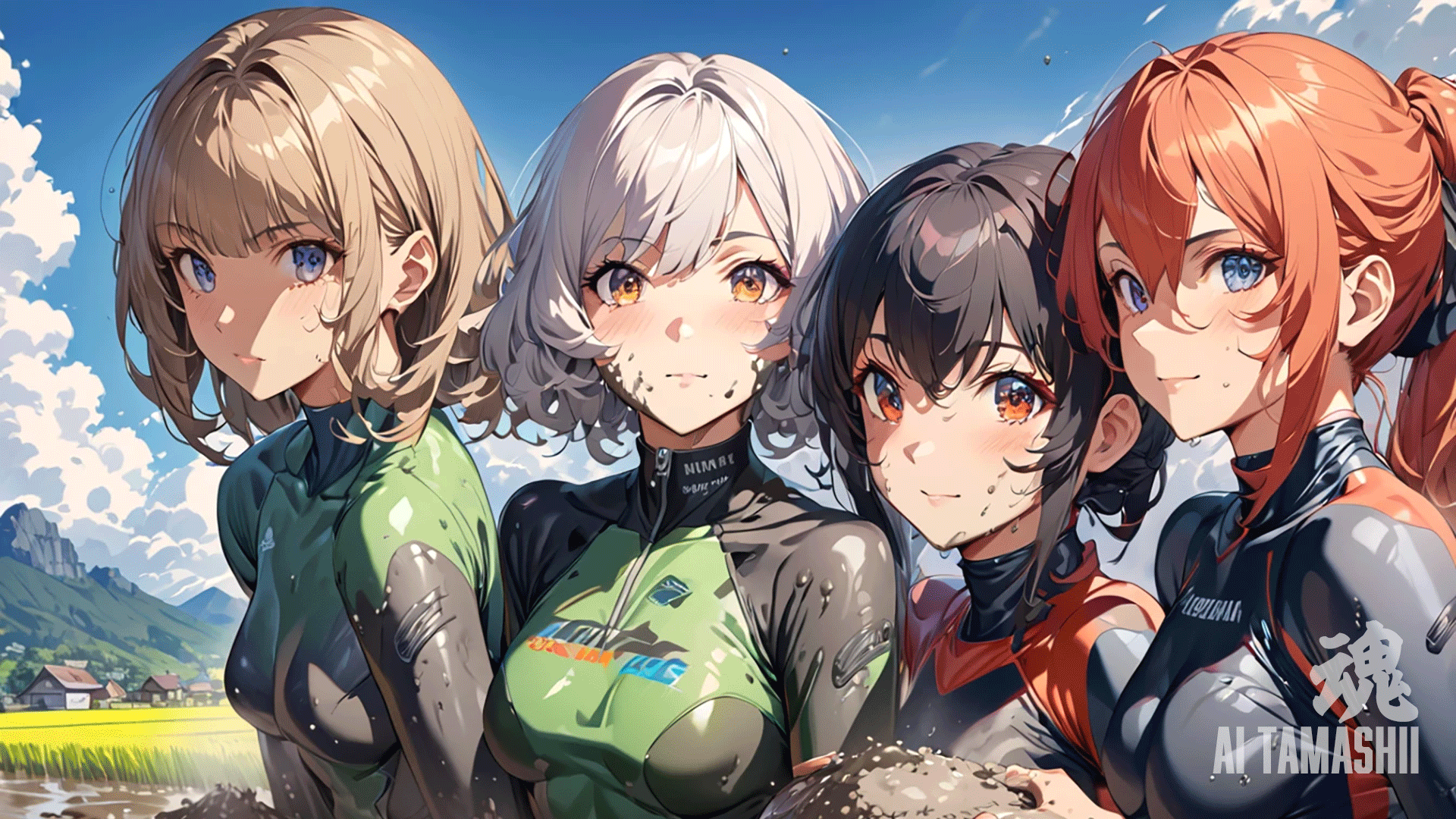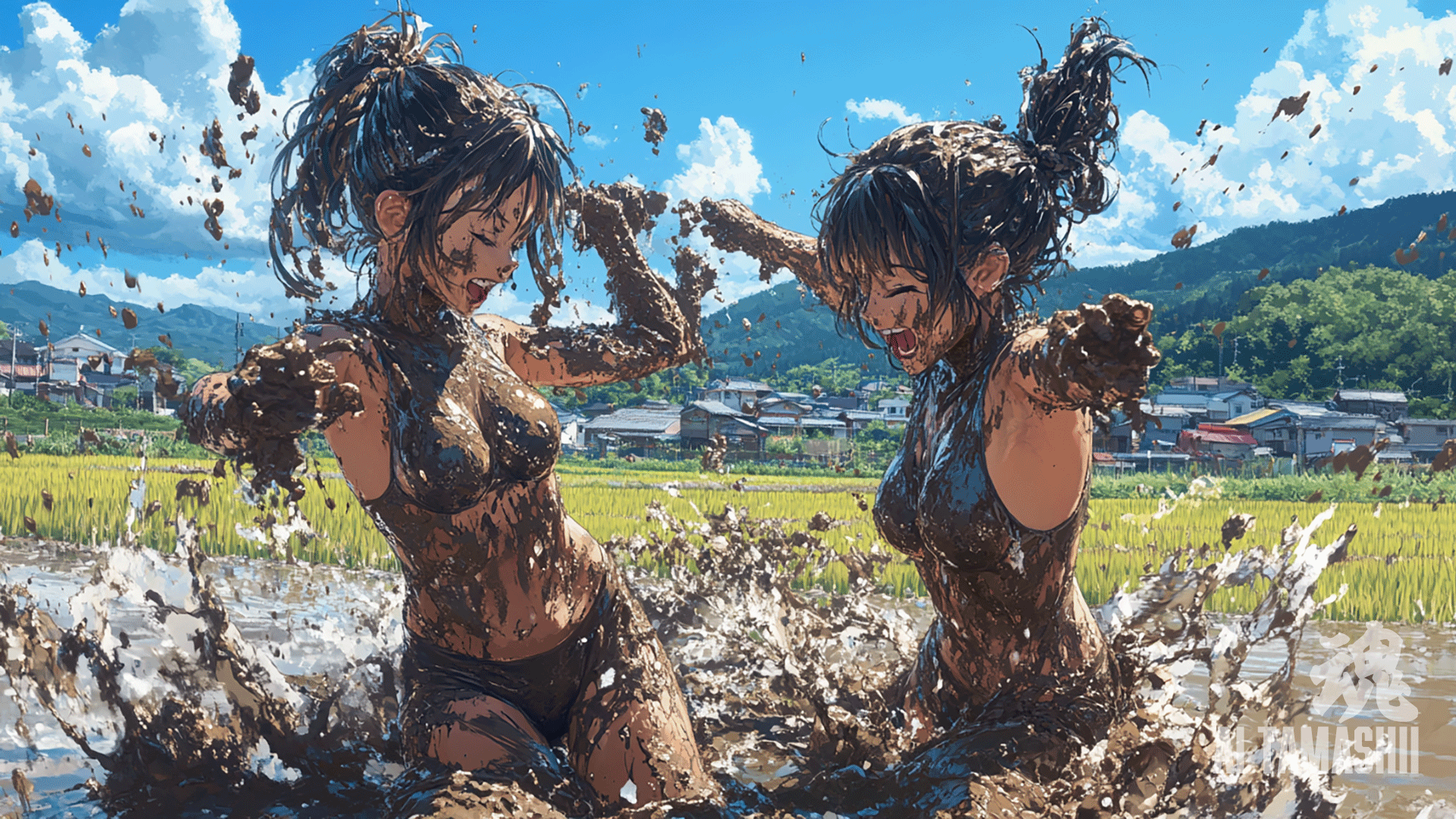What day is it today?
Today’s theme was difficult and lacking. I thought about it a lot, but it looks good because it’s simple.
“DALL-E 3” is not a festival, it’s a new competition.
February 25th is the “Warabi Naked Festival Day”.
Warabi Naked Festival: A festival to pray for bountiful harvests and protection from evil spirits at Warabi Mimusubi Shrine in Yotsukaido City, Chiba Prefecture. It is also known as the “Mudonko Festival”. The rituals starting at 11am cannot be viewed, but the Naked Festival (purification), Children’s Festival (children’s visit), mud throwing, horseback fighting, and the Sodai tomohatsu (the head of the family) starting at 1pm are open to the public.
DALL・E 3

Flux 1.1 Pro

Recraft V3

Midjourney

SeaArt AI

Leonardo AI

“Warabi Naked Festival Day” prompt
Create an anime-style portrait of a beautiful girl covered in mud in a rice field wearing an intricately designed wetsuit.
The girl's hair and face are covered in mud, and so is her wetsuit.
The girl is throwing mud at the camera.
The background is a rural town surrounded by mountains and a blue sky.
The image has a hyper-realistic aesthetic with a focus on detail and accuracy.Summary of what day it is today: February 25th
- Warabi Naked Festival: A festival to pray for bountiful harvests and protection from evil spirits at Warabi Mimusubi Shrine in Yotsukaido City, Chiba Prefecture. It is also widely known as the “Mudon Festival.” The ritual starting at 11am cannot be viewed, but the naked festival (purification), the children’s festival (children’s visit), mud-throwing and horse-riding battles, and the head representative’s tossing are open to the public from 1pm.
- Evening Newspaper Day: This day in 1969 marks the launch of Japan’s first evening newspaper, “Yukan Fuji,” which was exclusively sold at train stations.
- Hakone Irrigation Canal Completion Day: On this day in 1670 (Kanbun 10), the Hakone Irrigation Canal (formerly known as the Fukara Irrigation Canal), which holds great significance in the history of Japanese civil engineering, was completed. This irrigation canal was built by digging a 1,200m tunnel under Kojiri Pass to direct water from Lake Ashi to a village at the foot of Mount Fuji. It took five years to complete, led by Oba Gennosuke, the headman of Fukara village (present-day Susono city).
- Plum Blossom Festival: Sugawara no Michizane passed away on February 25th, 3rd year of Enki (March 26th, 903) in Dazaifu, where he had been exiled. After Michizane’s death, his political rival Fujiwara no Tokihira died suddenly, and Emperor Daigo’s sons died of illness one after the other. Kyoto also suffered a series of natural disasters, including epidemics and lightning strikes, which were feared to be the curse of Sugawara no Michizane. In 942 (Tenkei 5), Tajihi Fumiko received a divine revelation that she should build a shrine at Ukon-Baba in Kitano to enshrine the spirit of Sugawara no Michizane, and Kitano Tenmangu Shrine was founded in the first year of the Tenryaku era of Emperor Murakami (947). On this day, which is the anniversary of Sugawara no Michizane’s death, the Ume-Bana Festival is held at Kitano Tenmangu Shrine.



